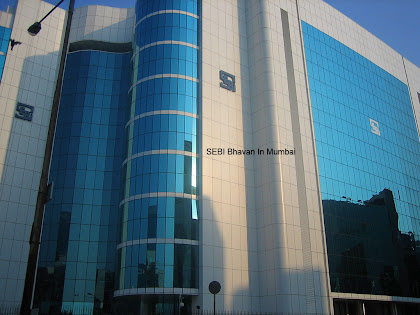Reforms Developments in Indian Capital Market
 Recent Developments in Capital Market of India
Recent Developments in Capital Market of India
The Indian capital market has witnessed major reforms in the decade of 1990s and there after. It is on the verge of the growth.
Thus, the Government of India and SEBI has taken a number of measures in order to improve the working of the Indian stock exchanges and to make it more progressive and vibrant.
Image or picture of SEBI Bhavan (House) in Mumbai, India.
 Reforms in Capital Market of India
Reforms in Capital Market of India
The major reforms undertaken in capital market of India includes:-
- Establishment of SEBI : The Securities and Exchange Board of India (SEBI) was established in 1988. It got a legal status in 1992. SEBI was primarily set up to regulate the activities of the merchant banks, to control the operations of mutual funds, to work as a promoter of the stock exchange activities and to act as a regulatory authority of new issue activities of companies. The SEBI was set up with the fundamental objective, "to protect the interest of investors in securities market and for matters connected therewith or incidental thereto."
- The main functions of SEBI are:-
- To regulate the business of the stock market and other securities market.
- To promote and regulate the self regulatory organizations.
- To prohibit fraudulent and unfair trade practices in securities market.
- To promote awareness among investors and training of intermediaries about safety of market.
- To prohibit insider trading in securities market.
- To regulate huge acquisition of shares and takeover of companies.
- Establishment of Creditors Rating Agencies : Three creditors rating agencies viz. The Credit Rating Information Services of India Limited (CRISIL - 1988), the Investment Information and Credit Rating Agency of India Limited (ICRA - 1991) and Credit Analysis and Research Limited (CARE) were set up in order to assess the financial health of different financial institutions and agencies related to the stock market activities. It is a guide for the investors also in evaluating the risk of their investments.
- Increasing of Merchant Banking Activities : Many Indian and foreign commercial banks have set up their merchant banking divisions in the last few years. These divisions provide financial services such as underwriting facilities, issue organising, consultancy services, etc. It has proved as a helping hand to factors related to the capital market.
- Candid Performance of Indian Economy : In the last few years, Indian economy is growing at a good speed. It has attracted a huge inflow of Foreign Institutional Investments (FII). The massive entry of FIIs in the Indian capital market has given good appreciation for the Indian investors in recent times. Similarly many new companies are emerging on the horizon of the Indian capital market to raise capital for their expansions.
- Rising Electronic Transactions : Due to technological development in the last few years. The physical transaction with more paper work is reduced. Now paperless transactions are increasing at a rapid rate. It saves money, time and energy of investors. Thus it has made investing safer and hassle free encouraging more people to join the capital market.
- Growing Mutual Fund Industry : The growing of mutual funds in India has certainly helped the capital market to grow. Public sector banks, foreign banks, financial institutions and joint mutual funds between the Indian and foreign firms have launched many new funds. A big diversification in terms of schemes, maturity, etc. has taken place in mutual funds in India. It has given a wide choice for the common investors to enter the capital market.
- Growing Stock Exchanges : The numbers of various Stock Exchanges in India are increasing. Initially the BSE was the main exchange, but now after the setting up of the NSE and the OTCEI, stock exchanges have spread across the country. Recently a new Inter-connected Stock Exchange of India has joined the existing stock exchanges.
- Investor's Protection : Under the purview of the SEBI the Central Government of India has set up the Investors Education and Protection Fund (IEPF) in 2001. It works in educating and guiding investors. It tries to protect the interest of the small investors from frauds and malpractices in the capital market.
- Growth of Derivative Transactions : Since June 2000, the NSE has introduced the derivatives trading in the equities. In November 2001 it also introduced the future and options transactions. These innovative products have given variety for the investment leading to the expansion of the capital market.
- Insurance Sector Reforms : Indian insurance sector has also witnessed massive reforms in last few years. The Insurance Regulatory and Development Authority (IRDA) was set up in 2000. It paved the entry of the private insurance firms in India. As many insurance companies invest their money in the capital market, it has expanded.
- Commodity Trading : Along with the trading of ordinary securities, the trading in commodities is also recently encouraged. The Multi Commodity Exchange (MCX) is set up. The volume of such transactions is growing at a splendid rate.
Apart from these reforms the setting up of Clearing Corporation of India Limited (CCIL), Venture Funds, etc., have resulted into the tremendous growth of Indian capital market.

No Comment Yet
Please Comment